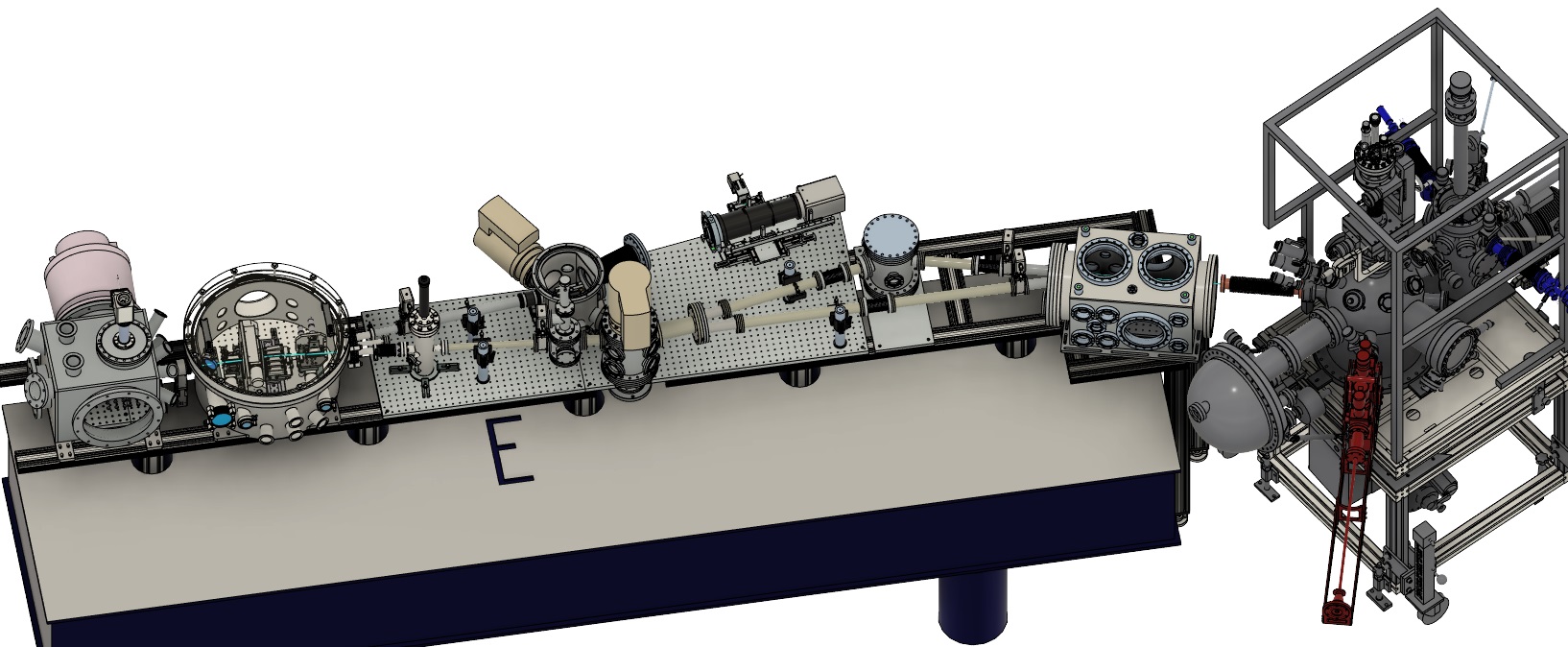
We have installed a new XUV beamline dedicated to material science and transient absorption experiments with the tuneable 100 kHz laser. The complete beamline layout is shown above, consisting of a differentially pumped high harmonic generation (HHG) source for the production of extreme ultraviolet (XUV) radiation (optimised in the 20-50 eV photon energy range but with the potential capability to extend beyond the carbon K-edge); a time-preserving monochromator; flat-field XUV spectrometer; dual-magnification XUV relay imaging and material science end station.
The main objective for materials science at 100 kHz is to increase the data acquisition rate whilst maintaining the photon density per pulse and thus maintaining the space-charge. The benefits of this are twofold: (1) to reduce the data collection time and/or allow a wider parameter space to be studied and (2) to enable a reduction of the XUV spot size to match the sample or domain sizes (down to the 10 μm level).
The objective for transient absorption spectroscopy is to allow high spectral resolution measurements to be performed at photon energies up to and potentially beyond the carbon K-edge. The higher repetition rate and stability of the laser should significantly improve the signal to noise and thus afford pump-probe measurements to be performed at these photon energies.
We are have now commissioned the beamline. Parameters for materials science experiments on the beamline are listed
here.
High Harmonic Generation
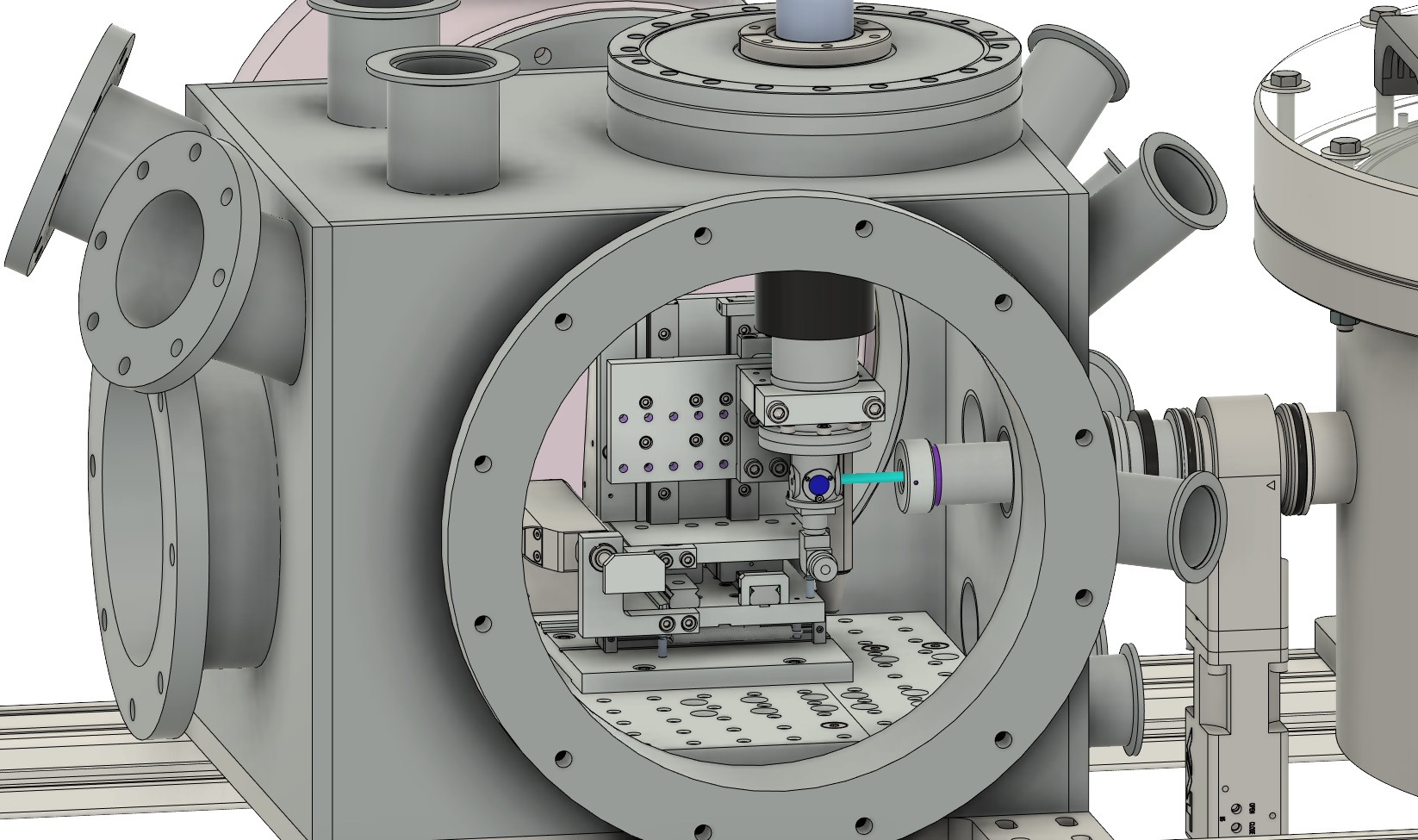
XUV radiation is produced via HHG in a purposely designed differentially pumped vacuum chamber. A gas cell/jet is inserted into a small conically shaped chamber attached to a high throughput pump and isolated from the main chamber using pinholes matched to the size of the optical beam. This should allow gas pressures in the generation region to reach above 1 bar whilst maintaining a vacuum level better than 10-4 mbar. The backing gas pressure can be controlled digitally. Three motorised stages allow the gas target to be positioned with micrometre accuracy with a longitudinal travel of 50mm. This allows the optimal and repeatable phase matching conditions to be achieved reliably for the given optical source. A second pinhole is used to isolate the subsequent monochromator chamber.
XUV monochromatisation
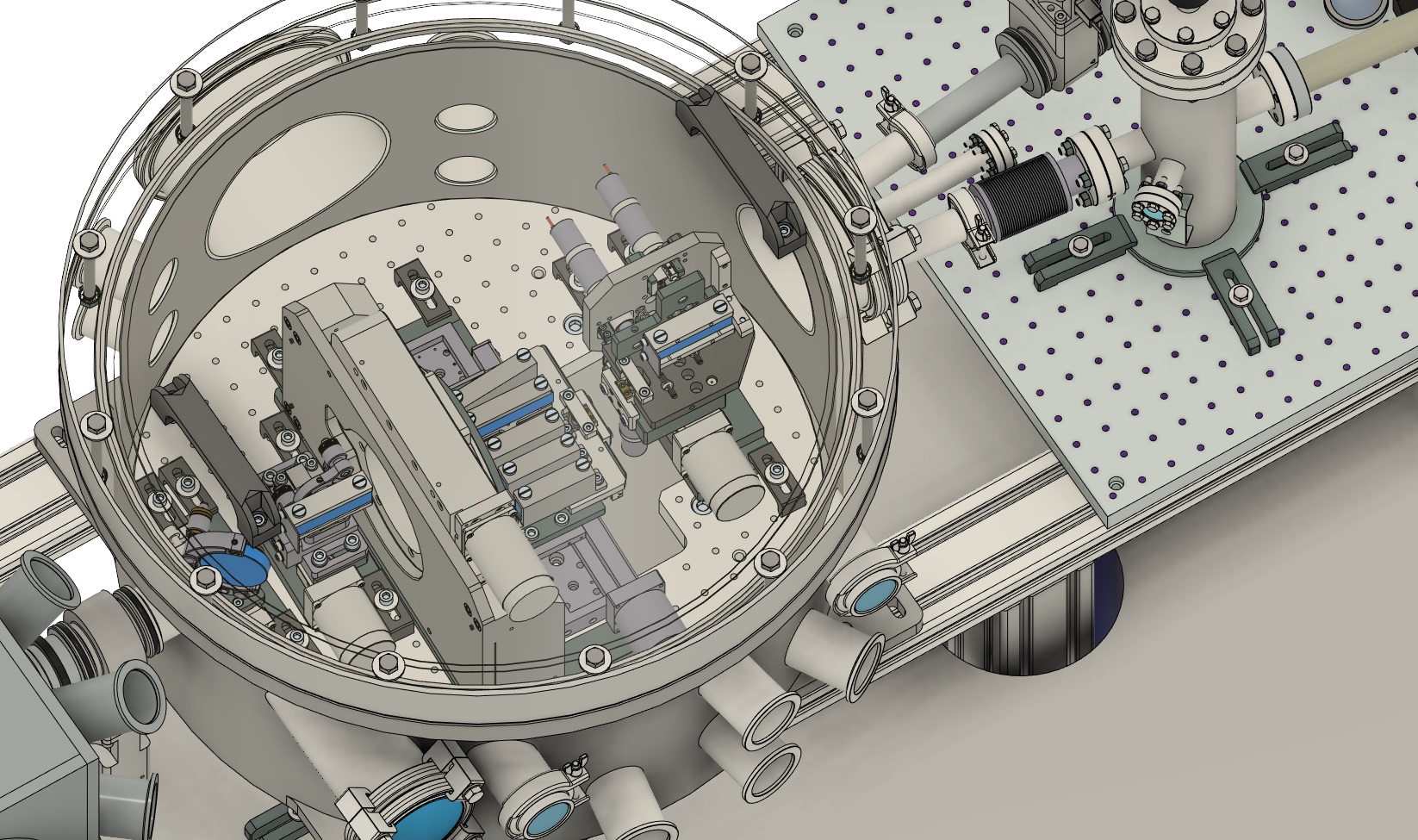
After generation, a single harmonic can be selected using a time-preserving monochromator that uses gratings in conical diffraction at grazing incidence in order to maximise throughput with minimal temporal and spatial aberration [1] . This design has been specifically designed for the highly divergent beams expected from the required focusing geometry. It consists of three interchangeable gratings with maximum efficiency in the 20-45 eV and 60-100 eV photon energy ranges. The performance specification of the harmonics will depend on the grating and the mode of operation of the laser. The spectral resolution will be limited by the bandwidth of the harmonics (~1 eV in short pulse mode and >100 meV in long pulse mode) with a high temporal resolution (tens of femtoseconds in short pulse mode and hundreds of femtoseconds in long pulse mode). In addition, the monochromator can be by-passed to allow the HHG source to be relay imaged onto the exit slit of the monochromator providing access to the full harmonic spectrum or the use of fixed transmission filters.
XUV Relay Imaging
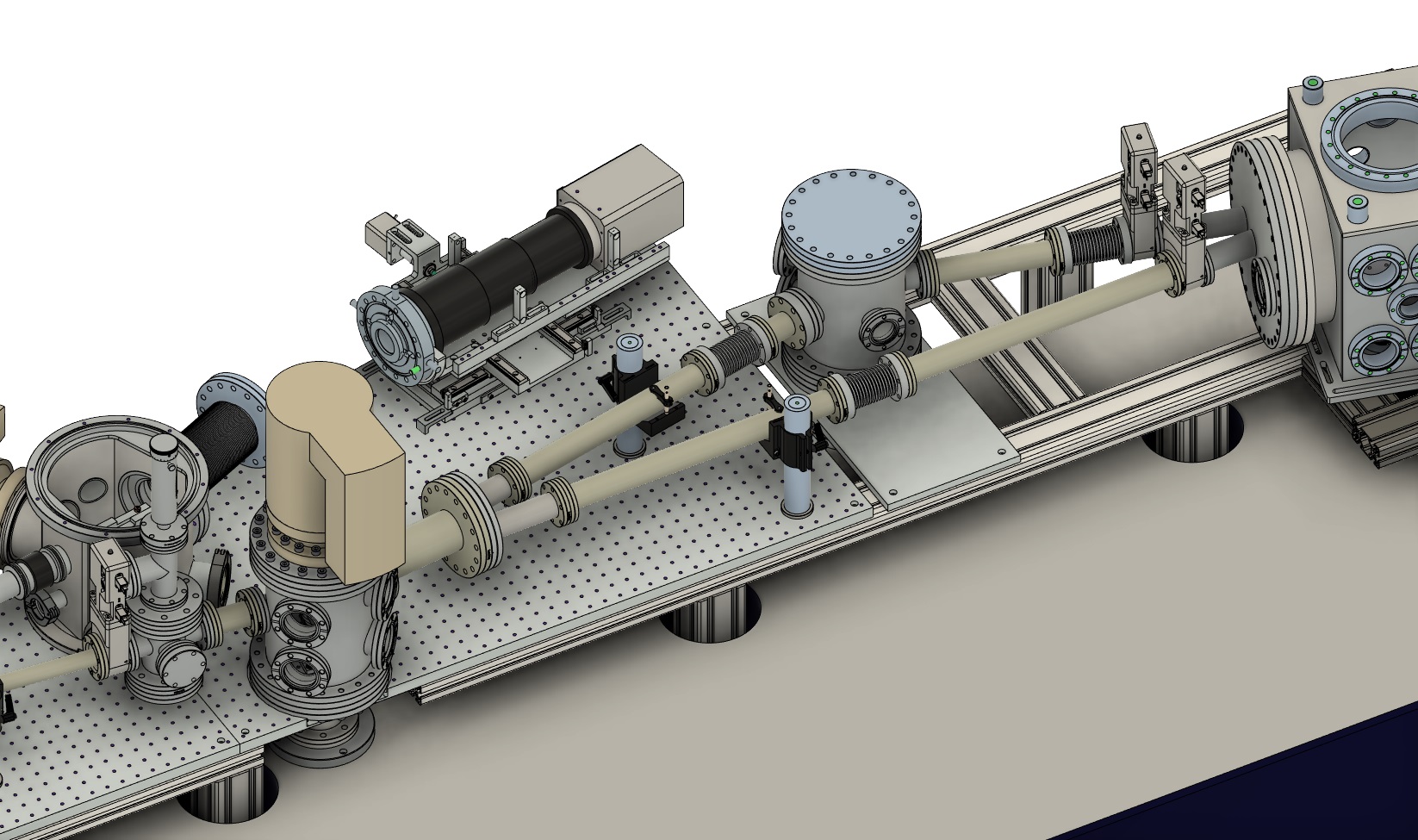
Two fully automated beam paths are available to relay-image the exit slit plane of the monochromator onto the sample in the end station. A single grazing incidence toroidal mirror will allow 1:1 imaging, yielding a spot size of ~100 μm providing maximum flux on the sample. Alternatively, a double toroid arrangement [2] can be used specifically designed for this beamline resulting in better than 3:1 demagnification, compensating the elongated beam from the monochromator and a spot size on the order of 20 μm with monochromatisation and <10 μm using the grating by-pass (e.g., with fixed transmission filters). High precision 6-axis stages allow spatial aberrations to be fully minimised and enable switching between the XUV beam paths without the need to realign the optical pump.
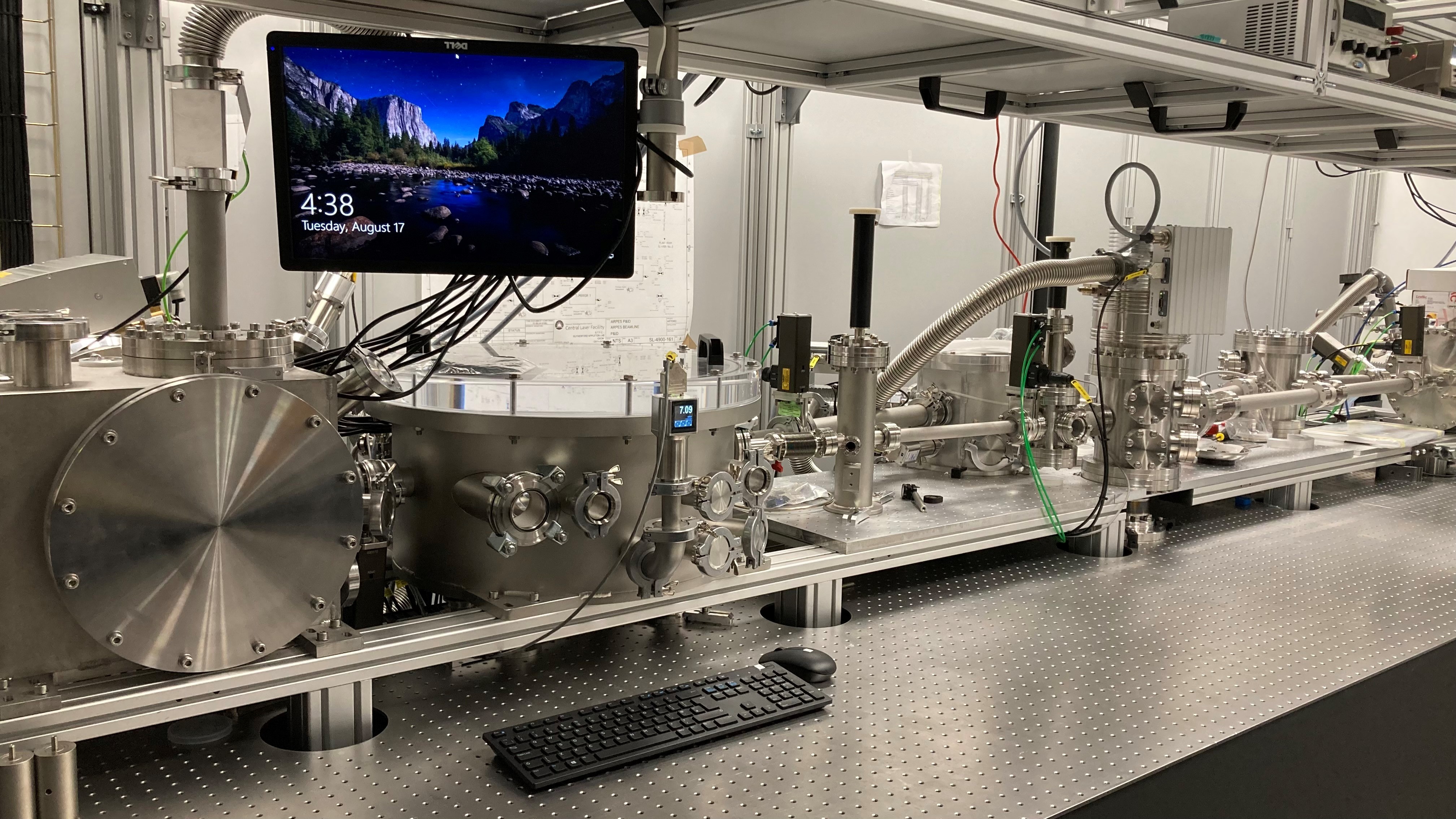
The 100 kHz-XUV beamline.
References
[1] L. Poletto et al., “Time-delay compensated monochromator for the spectral selection of extreme-ultraviolet high-order laser harmonics,” Rev. Sci. Instrum., vol. 80, no. 12, p. 123109, Dec. 2009.
https://doi.org/10.1063/1.3273964
[2] F. Frassetto et al., “High-throughput beamline for attosecond pulses based on toroidal mirrors with microfocusing capabilities,” Rev. Sci. Instrum., vol. 85, no. 10, p. 103115, Oct. 2014.
https://doi.org/10.1063/1.4898671
